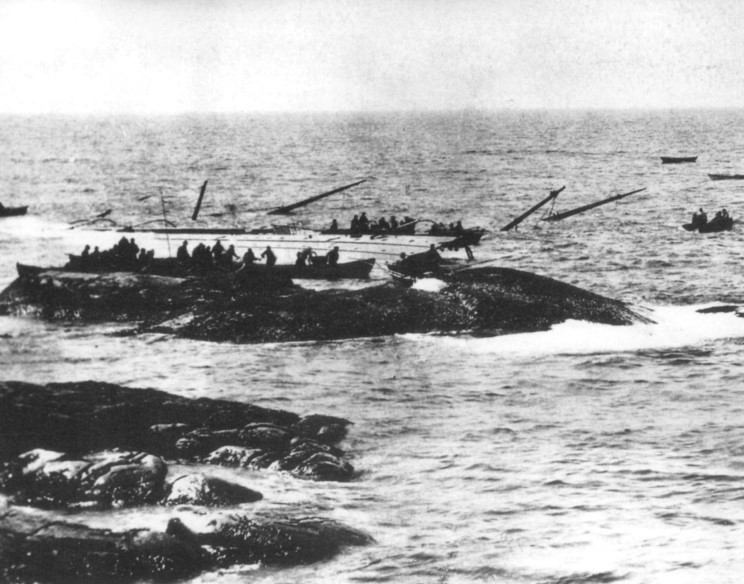|
On March 20, 1873 the White Star Liner Atlantic departed Liverpool for New York. Carrying 789 passengers and a crew of 142 under the command of captain James A. Williams. Atlantic was one of the original White Star ships ordered by Thomas Ismay, and would be the first one lost. Atlantic encountered a severe storm three days out of Queenstown and began to use excessive amounts of coal. Four days fighting headwinds and heavy seas reduced the supply to an estimated 319 tons. This meant, if there were further storms or unfavorable conditions that fuel was becoming a concern to the captain. Three days later they were down to 127 tons and a decision had to be made weather to try for New York, which was 460 miles away or to put in at Halifax and refuel. As Halifax was only 170 miles away and the barometer was again falling, it was decided to head for Halifax. The boilers were fired up to full capacity and the ship made 12 knots heading for a quick stop in Halifax so they could make New York with as little delay as possible. If they were late leaving New York a penalty would be imposed by the US government for delay of the mail. Heading to an unfamiliar coast, Williams was off course and never slowed down to make the appropriate navigational checks. At 12:20am on April 1, 1873, Williams reckoned he was 48 miles from Sambro lighthouse but, due to a stronger than expected current and Williams navigational errors, he was well off course, instead of nearing Halifax he was running full speed toward Meagher's Island. Williams left the bridge and went to his quarters for a nap but, left orders to be awakened at 3am, the time he believed they would be off Halifax. At 2am a lookout spotted breakers and the helmsman put the wheel hard to starboard but it was too late. The Atlantic ran aground on Marr's Rock and began to sink. The passengers who were sleeping at the time of the wreck, were awakened to the prospect of a sinking ship. The bow of the ship was wedged in the rock and stuck fast so she began to go down by the stern. Soon she began to roll over, dumping hundreds of frightened people into the sea. The cold water claimed most all of them. Many took to the rigging but most, to paralyzed by fear, just remained on the deck being swamped by the waves. Slowly they gave up hope and were washed into the sea. Two of the Atlantic's crew managed to swim to the rock and secure several lines to take people off but, the prospects of survival for most was grim. About two hundred did make it over to the rock but many were washed into the sea while trying. At about 5am the Atlantic broke in half leaving the bow section with some survivors, including the captain, still in the rigging. Several fishing boats removed those still alive early in the morning but a further 32 were stuck in the mizzenmast. The weather prevented further attempts for rescue and all the locals could do was watch as people, exhausted and frozen, fell one by one to their deaths. After ten hours a local minister named William Ancient could stand no more of the horror. He convinced some fishermen to make another rescue attempt. One of the people who was saved by the minister was John Hindley, a 12 year old boy and the only child of the 78 on board who survived. All the female passengers died but there was one female who did survive. An ordinary seaman who for years, had successfully posed as a man. The death toll was between 545 and 585 although the real number will never be known because the records of the passengers went down with the ship. Captain Williams survived and was tried for the loss of his vessel. His masters license was suspended for two years due to negligence in approaching a coast unknown to him. |
© 2006 Michael W. Pocock MaritimeQuest.com |
 |
Wreck of the SS Atlantic |